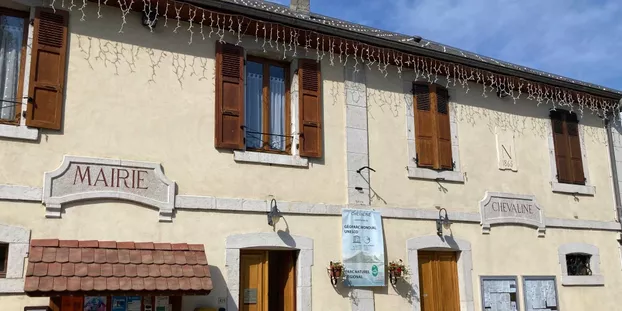ZaZara
AstraZaZara
- Joined
- Jan 31, 2014
- Messages
- 8,425
- Reaction score
- 18,000
«Ça a été un drame» : les habitants de Chevaline toujours traumatisés dix ans après

"It was a terrible tragedy": the inhabitants of Chevaline are still shocked ten years later
Ten years ago to the day, the Chevaline massacre took place near Annecy, in Haute-Savoie. A British family of Iraqi origin and a French cyclist were found dead in a car park near a forest road, each shot several times. An unexplained tragedy that still lingers in the minds of the inhabitants of the village.
The Chevaline massacre is still very present in people's memories. Ten years to the day after the tragedy, the inhabitants of this commune near Annecy in Haute-Savoie have not forgotten. The quadruple murder committed in the woods near a forest road still remains unexplained today. The investigation is still ongoing, and the murder lingers on in people's minds, especially Ginette's: "It was a tragedy, everyone searched and searched. And they found nothing. How? Why?" she still wonders.
Bernard also has no answer. This cyclist often takes the Combe d'Ire hiking trail, a stone's throw from the car park where the bodies of the British family of Iraqi origin and a French cyclist were found. "Every time I pass here, I think about it. There were these girls, I think about them. It's nice to walk along this path. But now, the shootings are always in the back of my head." Bernard also regrets that this drama has become the main story of his village. "It's a bit of a drag on the village. The name of Chevaline reminds people of this sinister event."
Ten years later, the people of Chevaline continue to come up with hypotheses, like Brigitte. "We think with the neighbours that they were meeting someone," she explains. "Because getting into a car with five people, dressed in street clothes and not going for a walk, doesn't fit in with the area at all."
Lately, the investigation has shifted to the local trail. It is difficult to envisage this for Michèle Domenge-Chenal, mayor of Chevaline. "Among us, we all know each other. And really, I can't believe that it could be one of us. It's not possible. There is no spirit of suspicion in the village, at any rate."
In Chevaline, many remain convinced that the truth about the massacre will never come to light.
BBM

"It was a terrible tragedy": the inhabitants of Chevaline are still shocked ten years later
Ten years ago to the day, the Chevaline massacre took place near Annecy, in Haute-Savoie. A British family of Iraqi origin and a French cyclist were found dead in a car park near a forest road, each shot several times. An unexplained tragedy that still lingers in the minds of the inhabitants of the village.
The Chevaline massacre is still very present in people's memories. Ten years to the day after the tragedy, the inhabitants of this commune near Annecy in Haute-Savoie have not forgotten. The quadruple murder committed in the woods near a forest road still remains unexplained today. The investigation is still ongoing, and the murder lingers on in people's minds, especially Ginette's: "It was a tragedy, everyone searched and searched. And they found nothing. How? Why?" she still wonders.
Bernard also has no answer. This cyclist often takes the Combe d'Ire hiking trail, a stone's throw from the car park where the bodies of the British family of Iraqi origin and a French cyclist were found. "Every time I pass here, I think about it. There were these girls, I think about them. It's nice to walk along this path. But now, the shootings are always in the back of my head." Bernard also regrets that this drama has become the main story of his village. "It's a bit of a drag on the village. The name of Chevaline reminds people of this sinister event."
Ten years later, the people of Chevaline continue to come up with hypotheses, like Brigitte. "We think with the neighbours that they were meeting someone," she explains. "Because getting into a car with five people, dressed in street clothes and not going for a walk, doesn't fit in with the area at all."
Lately, the investigation has shifted to the local trail. It is difficult to envisage this for Michèle Domenge-Chenal, mayor of Chevaline. "Among us, we all know each other. And really, I can't believe that it could be one of us. It's not possible. There is no spirit of suspicion in the village, at any rate."
In Chevaline, many remain convinced that the truth about the massacre will never come to light.
BBM
